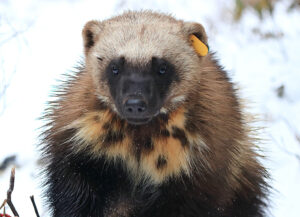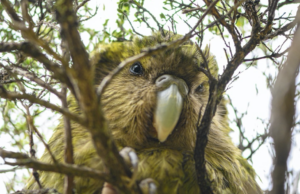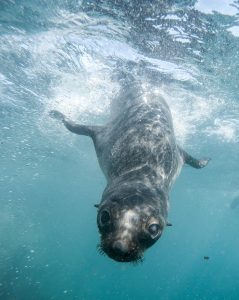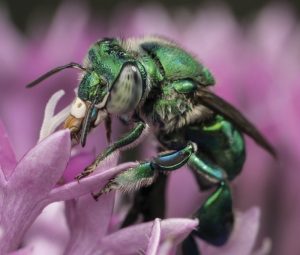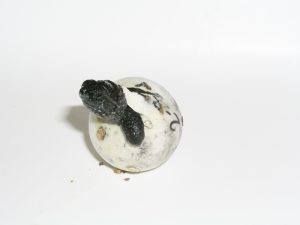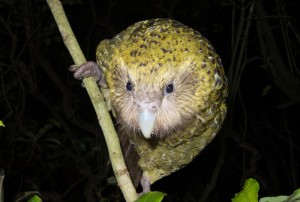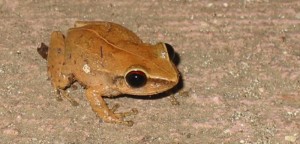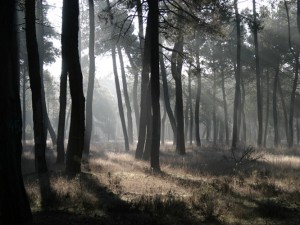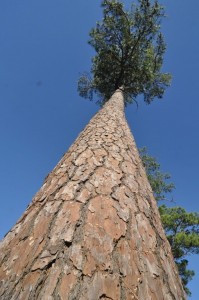Enter your address to receive notifications about new posts to your email.
Articles tagged Conservation Biology
(11 results)
-
Science & Publishing
University of Minnesota researchers map genome of the last living wild horse species
The study, published in G3: Genes|Genomes|Genetics, is part of larger conservation efforts to save Przewalski’s horse.
-
Science & Publishing
Wolverine genome assembly sets a standard for conservation geneticists
Chromosome-level assembly of the North American wolverine sets a new standard for the weasel (Mustelidae) family.
-
As New Zealand’s endangered kākāpō rebounds, researchers measure genomic signs of inbreeding
Efforts to diversify an inbred population must take into account the genetic backgrounds of the founders. A female kākāpō named Rimu, whose parents are both Stewart Island founders.Photo by Jake Osborne. The nocturnal flightless parrot known as the kākāpō was once abundant throughout New Zealand. But after the introduction of mammalian predators, the species all…
-
A look into how fur seals rebounded after overhunting
A new genome assembly for Antarctic fur seals sheds light on their historic comeback after 19th century hunting. In the late 19th century, the Antarctic fur seal was thought to be effectively extinct. After over a century of overexploitation driven by demand for the seal’s prized pelt, populations at known breeding grounds seemed to have…
-
Behind the cover: orchid bee genome
A green, iridescent bee perches on a pink flower, extending its proboscis to reach the sweet nectar inside. He’s not just after a meal—he’s also collecting fragrant substances to store inside his hollow rear legs. Later, he’ll buzz his wings to release the aroma with the hope of attracting a mate. The cover of the…
-
The fungus-fighting secrets hiding in the sugar pine’s enormous megagenome
Towering sugar pine trees dominate the mountain forests of California and Oregon. They are the tallest pine trees in the world, regularly growing to skyscraper heights of over 100 meters. But these forest behemoths are under attack from a very tiny foe: an invasive fungus. White pine blister rust was accidentally introduced to western North…
-
First gene linked to temperature-dependent sex determination
The sex of many reptile species is set by temperature. New research reported in the journal GENETICS identifies the first gene associated with temperature-dependent sex determination in any reptile. Variation at this gene in snapping turtles contributes to geographic differences in the way sex ratio is influenced by temperature. Understanding the genetics of sex determination…
-
Kākāpō 125 Genomes Project: Sequencing an entire species
In 1996, when I started researching the conservation genetics of New Zealand’s critically endangered parrot, the kākāpō (Strigops habroptilus), little was known of the species’ genome. On many occasions after a long day in the molecular lab on the hunt for an elusive gene, I found myself imagining that I had the complete genome of…
-
Frog fungus gets lazy in the lab
Amphibians around the world have been devastated by the spread of the deadly fungus Batrachochytrium dendrobatidis (Bd). But although many populations have been decimated, others have survived the same threat. One reason for such different outcomes is variation in virulence between Bd isolates. In the latest issue of G3, Refsnider and Poorten et al. investigate…
-
Forest forecasts
In 2009, after five years parching under the arid blue skies of Calcena in northeastern Spain, dozens of neat rows of maritime pine seedlings had grown unevenly. Some of the seedlings had died years ago, some were stunted but hanging on, while others grew tall and green. The trees were not in their native soil.…
-
Assembling a Colossus
The loblolly pine genome is big. Bloated with retrotransposons and other repetitive sequences, it is seven times larger than the human genome and easily big enough to overwhelm standard genome assembly methods. This forced the loblolly pine genome sequencing team, led by David Neale at the University of California, Davis, to look for ways to…


